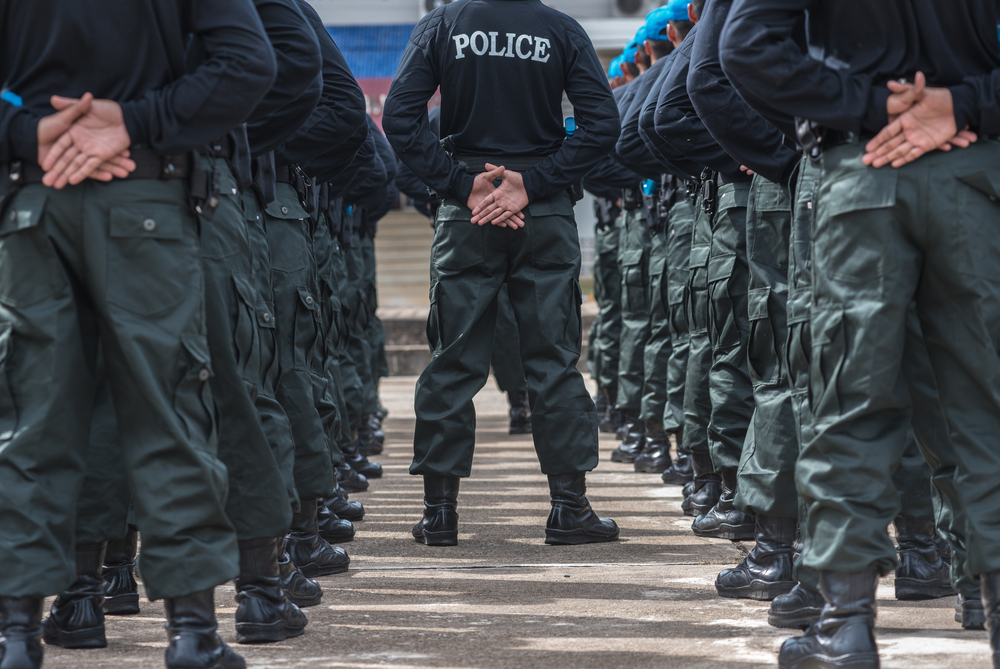
Police Tape 101: Everything You Need to Know
Police tape, commonly known as crime scene tape, is an important tool used by law enforcement to secure…

Prior to 1988, police officers in the United States had no training to teach them how to handle a mental health crisis. When officers are untrained on how to de-escalate someone in crisis, the possibility of them using force goes up drastically. Therefore, crisis intervention team (CIT) program and training was created in Memphis, Tennessee, after a tragic incident where a police officer shot a person with mental illness.
Even 34 years later, most communities in the United States still do not have CIT for their officers. And sadly, some officers aren’t even aware of what CIT is. In a day and age where police reform and accountability are at the forefront of communities, the time for change is now.
CIT is a community-based program that brings together a variety of stakeholders to change how communities are responding to mental health crises. A significant part of CIT is a 40-hour training meant to educate officers on recognizing when individuals have mental illness and are symptomatic, de-escalating the crisis situation and navigating people toward resources and help. The curriculum was a collaborative effort between the Memphis Police Department, National Alliance on Mental Illness, the University of Tennessee, and the University of Memphis.
The training can be tailored to suit the individual needs of an agency based on the level of available resources. However, most 40-hour CIT trainings consist of:
For too long, officers have been more focused on penalizing the behaviors of people in crisis rather than attempting to understand why they are in crisis in the first place. And this training teaches officers how to de-escalate and where to navigate people in a crisis – including understanding the benefits of treatment rather than incarceration.
These techniques have been used to divert thousands of people from jail and prevent thousands more from making potentially fatal decisions.
Here are a few things to consider when developing a CIT program in your area.
In 2003, the San Antonio Police Department in San Antonio, Texas, where I worked for 27 years, adopted the 40-hour CIT course and in 2008, developed a full-time mental health detail. Sitting through the CIT training is valuable for each individual officer, but the results are quite profound when an agency takes the next step to create an actual mental health unit. When you have a full-time unit, 100% of the calls these officers respond to are individuals during their darkest times. It is some of the best and most rewarding on-the-job training an officer can receive.
Responding to people suffering on a daily basis creates the deepest level of empathy — if you have the right officers filling the role. Many police departments today are creating these specialized units and are fortunate to have a better understanding of mental health crises and the types of response needed to offer better outcomes and at the same time, reducing the possible use of force situations that could occur. And hopefully, with the spread of CIT, more agencies will follow suit.
As a result of my own experience with CIT training and the value it added not only to my professional career as a police officer, but I also saw the benefit the training added to the community I was serving. I felt it was important to make available the foundation of the training concepts of CIT to all first responders. Along with retired police sergeant Nicholas Ruggiero, we co-authored, Mental Health and De-Escalation: A Guide for Law Enforcement Professionals. In the book I highlight the importance of understanding the intersections of mental health and law enforcement. We provide an overall concept of de-escalation when confronted with a crisis and provide valuable insight as to best possible outcomes while at the same time keeping officers and members of the community safe.
CIT is an integral part of developing an officer, simply because of the alternative perspectives it can provide. As Abraham H. Maslow stated, “If the only tool you have is a hammer, everything will look like a nail.” Let’s embrace the notion that just because things have always been done a
certain way, doesn’t mean it is the best way. We, as a profession, can be better. We can do better. Quality crisis intervention team training is one simple place to start.
To see Ernie’s work in action, check out the HBO Documentary Ernie & Joe: Crisis Cops

Police tape, commonly known as crime scene tape, is an important tool used by law enforcement to secure…

The police are called daily regarding various incidents of public interest. It is our responsibility to provide the…

Many police officers experience terrible, traumatic events in the line of duty. A significant number of police officers…